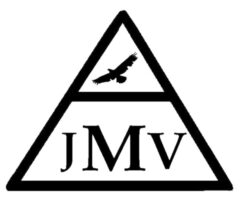Kimiyo Yamasaki, Joshua Mullen, Denise Wheatley, Ron Sanderson
Cite
Yamasaki K, Mullen J, Wheatley D, Sanderson R. Accurate measurement of ventilator length of stay and ventilator days for use in assessing patient safety and ventilator associated events. J Mech Vent 2020; 1(2):26-31.
Abstract
Background
Accurate measurements of ventilator length of stay are important for quality measures and mandated by Centers of Disease Control for reporting ventilator associated events. However, it is unknown which method of such a calculation gives the more accurate results.
Design
We collected data using three different methods of calculating ventilator length of stay in a community hospital ICU. The first method is the walk-through method for collection of data at 6 am, the second is a data base collection system we created where data was collected by respiratory therapists in a daily ventilator patient log then entered into the database, and finally from query of medical charges for ventilator days from financial department.
Results
There was statistically significant disagreement between the three methods. The walk though method and data base were not statistically different, but the data from financial charges overestimated the ventilator length of stay. Additionally, there was not statistically significant differences between the time of the walk-through data collection.
Conclusion
Ventilator days and hours should be measured by a precise database rather than indirect methods of estimation like walk-through or financial charges. Patient exposure to risk, and reporting of ventilator time, whether days or hours should be measured directly, not estimated. A larger study needs to be performed to examine this variation in a broader medical setting.
Keywords
ventilator length of stay, ventilator associated events, ventilator associated pneumonia
References
1. Ventilator Associated Events. Document of the CDC January 2020. https://www.cdc.gov/nhsn/pdfs/pscmanual/10-vae_final.pdf.
2. Moitra VK, Guerra C, Linde-Zwirble WT, et al. Relationship Between ICU Length of Stay and Long-Term Mortality for Elderly ICU Survivors. Crit Care Med. 2016; 44(4):655-662.
https://doi.org/10.1097/CCM.0000000000001480
3. Ibrahim EH, Tracy L, Hill C, et al. The occurrence of ventilator-associated pneumonia in a community hospital: risk factors and clinical outcomes. Chest 2001; 120(2):555-561.
https://doi.org/10.1378/chest.120.2.555
4. Tablan OC, Anderson LJ, Besser R, et al. CDC; Healthcare Infection Control Practices Advisory Committee. Guidelines for preventing health-care-associated pneumonia 2003: recommendations of CDC and the Healthcare Infection Control Practices Advisory Committee. MMWR Recomm Rep 2004; 53(RR-3):1-36.
5. Rello J, Ollendorf DA, Oster G, et al. VAP Outcomes Scientific Advisory Group. Epidemiology and outcomes of ventilator-associated pneumonia in a large US database. Chest 2002; 122(6):2115-2121.
https://doi.org/10.1378/chest.122.6.2115
6. Chastre J, Fagon JY. Ventilator-associated pneumonia. Am J Respir Crit Care Med. 2002; 165(7):867-903.
https://doi.org/10.1164/ajrccm.165.7.2105078
7. Institute for Healthcare Improvement. Ventilator-Associated Pneumonia (VAP) Rate per 1,000 Ventilator Days. Retrieved from http://www.ihi.org/resources/Pages/Measures/VentilatorAssociatedPneumoniaRateper1000VentilatorDays.aspx
8. O’Neal PV, Ozcan YA, Ma Y. Benchmarking Mechanical Ventilation Services in Teaching Hospitals. Journal of Medical Systems 2002; 26:227–240.
https://doi.org/10.1023/A:1015058217867
9. Talbot TR, Starmer JM. Does the specific time of day used to capture data on ventilator-days have an impact on the documented rates of ventilator-associated pneumonia? Infect Control Hosp Epidemiol 2010; 31(5):548-550.
https://doi.org/10.1086/652450
10. Burns SM, Earven S, Fisher C, et al. Implementation of an institutional program to improve clinical and financial outcomes of mechanically ventilated patients: one-year outcomes and lessons learned. Crit Care Med 2003; 31(12):2752-2763.
https://doi.org/10.1097/01.CCM.0000094217.07170.75
